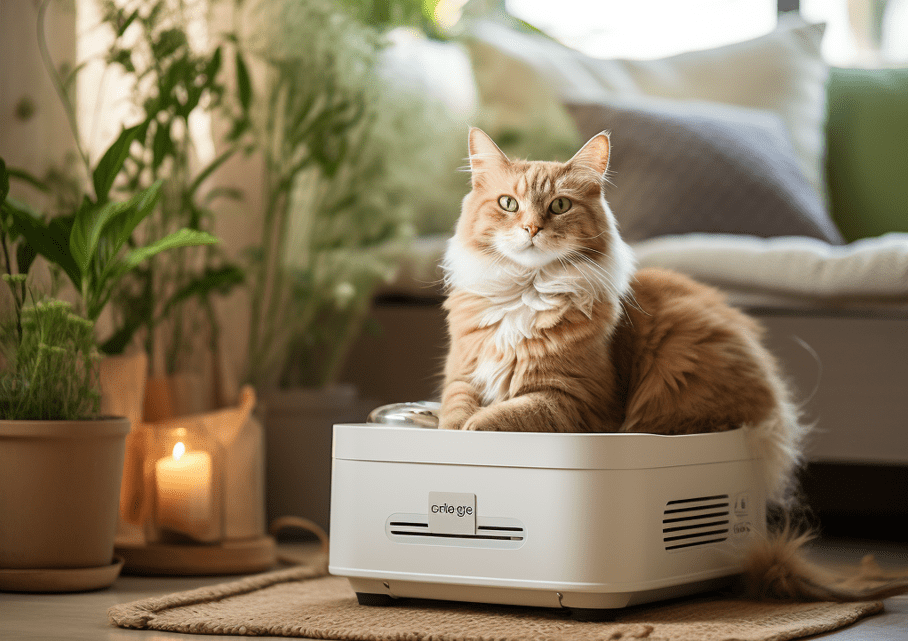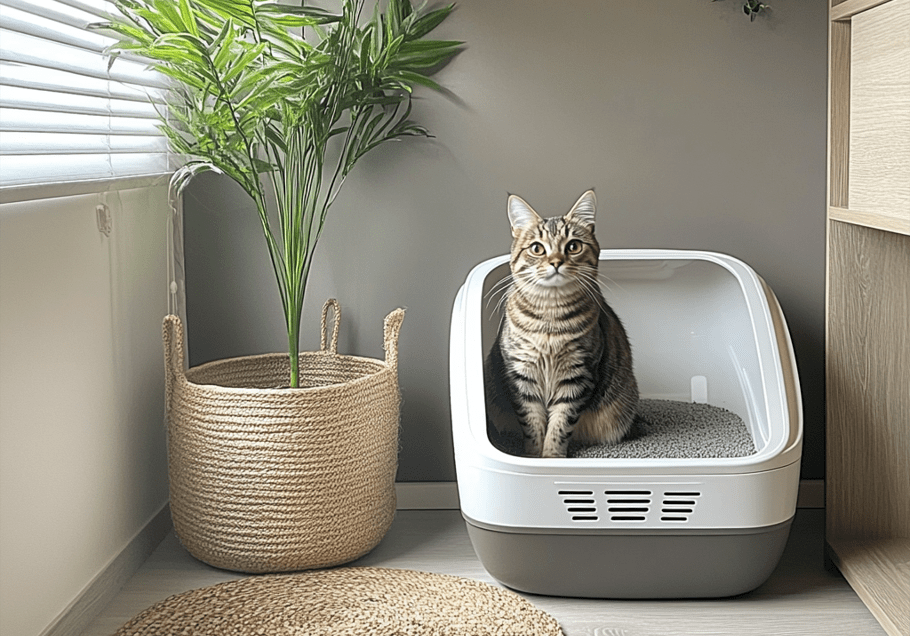
Imagine your beloved feline companion struggling to breathe, wheezing between each labored breath. For cats with asthma, every dusty particle in the air can trigger a dangerous respiratory episode. One often overlooked culprit? Dusty cat litter.
Is dusty litter bad for cats with asthma? The answer is a resounding yes. Dust particles from traditional clay litters can irritate your cat’s sensitive airways, worsening asthma symptoms and leading to long-term health complications. But what alternatives exist? How can you protect your cat from unnecessary suffering?
This article dives deep into the risks of dusty litter for asthmatic cats, explores safer alternatives, and provides actionable steps to create a healthier environment for your furry friend.
Understanding Feline Asthma: Why Dust Is a Silent Threat
Feline asthma is a chronic respiratory condition where a cat’s airways become inflamed, leading to coughing, wheezing, and difficulty breathing. Just like humans, cats can suffer from allergic reactions to airborne irritants, and dust is one of the most common triggers.
When a cat digs in a dusty litter box, fine particles become airborne. These particles can be inhaled, irritating the delicate lining of the lungs. Over time, repeated exposure can lead to increased asthma attacks, chronic bronchitis, or even permanent lung damage.
Key signs your cat may be struggling with asthma or dust sensitivity:
1.Frequent coughing or hacking
2.Wheezing or labored breathing
3.Lethargy or reduced activity
4.Open-mouth breathing (a serious sign requiring immediate vet attention)
If your cat exhibits any of these symptoms, consult a veterinarian for a proper diagnosis. Meanwhile, reassessing their litter choice is a crucial step in managing their condition.
The Hidden Dangers of Traditional Clay Litter
When it comes to feline asthma, the type of litter you use plays a critical role in your cat’s respiratory health. Traditional clay litter, while popular and affordable, poses several hidden dangers that can exacerbate asthma symptoms and even lead to long-term lung damage. Understanding these risks is the first step toward making safer choices for your asthmatic cat.
1.High Dust Content: An Invisible Respiratory Hazard
Clay litter is notorious for producing fine dust particles when poured, scooped, or disturbed by digging. Even brands labeled as “low-dust” can still release microscopic particles into the air. For cats with asthma, inhaling these particles can trigger immediate bronchial constriction, leading to coughing, wheezing, and labored breathing.
The dust doesn’t just affect cats—it can also settle on surfaces, meaning your feline companion may continue to inhale residual particles long after using the litter box. Over time, repeated exposure can cause chronic inflammation in the airways, making asthma attacks more frequent and severe.
2.Artificial Fragrances and Chemical Additives
Many clay litters contain synthetic perfumes designed to mask odors. While these scents may seem pleasant to humans, they can be overwhelming and irritating to a cat’s highly sensitive respiratory system. Chemical additives, such as baking soda or silica dust, are often included for odor control but can further aggravate asthma symptoms.
Some scented litters also use phthalates—a group of chemicals linked to respiratory issues in both animals and humans. These substances can linger in the air, creating an ongoing source of irritation for asthmatic cats.
3.Silica Dust: A Known Carcinogen and Lung Irritant
Certain clay litters contain crystalline silica, a mineral that, when crushed into fine dust, can be inhaled deep into the lungs. Prolonged exposure to silica dust has been linked to silicosis (a serious lung disease) in humans, and while research on cats is limited, veterinarians warn that it can similarly contribute to chronic respiratory conditions.
Silica particles are sharp and abrasive, causing microscopic damage to lung tissue over time. For cats already suffering from asthma, this additional irritant can accelerate lung damage and worsen breathing difficulties.
4.Clumping Clay Litter: A Potential Ingestion Risk
Clumping litters, often made from sodium bentonite clay, form hard, cement-like clumps when wet. While convenient for cleaning, these litters can stick to a cat’s paws and fur, leading to accidental ingestion during grooming.
If ingested, the clay can expand in the stomach, potentially causing gastrointestinal blockages—a serious medical emergency. For cats with asthma, the added stress of digestive issues can further compromise their respiratory health.
5.Environmental and Long-Term Health Concerns
Beyond immediate respiratory risks, clay litter is non-biodegradable and contributes to environmental waste. Mining bentonite clay also involves destructive excavation processes, making it an unsustainable choice.
For cats with asthma, the long-term accumulation of dust and chemical exposure can lead to irreversible lung scarring, increased susceptibility to infections, and a diminished quality of life.
Best Dust-Free Litter Alternatives for Asthmatic Cats
If traditional clay litter is harmful, what should you use instead? Fortunately, several dust-free and natural alternatives provide excellent odor control without compromising your cat’s respiratory health. Below, we explore the top choices and their benefits.
1. Paper-Based Litter: Ultra-Low Dust and Gentle on Lungs
Made from recycled newspaper or paper pulp, this litter is virtually dust-free, making it ideal for asthmatic cats. It’s also highly absorbent and soft on sensitive paws.
Pros:
1.Minimal dust, reducing asthma triggers
2.Biodegradable and eco-friendly
3.Lightweight and easy to handle
Cons:
1.Doesn’t clump as firmly as clay, requiring more frequent changes
2.May track more than other litters
Best For: Cats with severe asthma or dust allergies.
2. Pine or Wood Pellet Litter: Natural and Low-Dust
Pine and wood pellets are made from compreshttps://thepetfantasy.com/identifying-and-treating-cats-allergies/sed sawdust, offering a natural, low-dust option with a mild, woodsy scent. When wet, the pellets break down into sawdust, which can be sifted out.
Pros:
1.Naturally antimicrobial, reducing odors
2.Minimal dust production
3.Biodegradable and sustainable
Cons:
1.Some cats dislike the texture or scent
2.Requires a sifting litter box for best results
Best For: Owners looking for an affordable, eco-friendly option.
3. Corn or Wheat-Based Litter: Clumping and Low-Irritant
These plant-based litters clump similarly to clay but without the dust. They’re made from renewable resources and are generally safe for cats with respiratory issues.
Pros:
1.Clumps well for easy scooping
2.Naturally absorbs odors
3.Low dust and chemical-free
Cons:
1.Can attract pests if stored improperly
2.Some cats may be allergic to corn or wheat
Best For: Households wanting a balance between convenience and safety.
4. Silica Gel Crystal Litter: Low-Dust and High-Absorbency
Made from porous silica beads, this litter is excellent at controlling odors and moisture. While some silica litters can be dusty, low-dust versions are available and safer for asthmatic cats.
Pros:
1.Extremely absorbent, lasting longer between changes
2.Virtually odor-free
3.Minimal tracking
Cons:
1.Can be expensive
2.Some cats dislike the texture
Best For: Owners who prefer long-lasting, low-maintenance litter.
5. Coconut or Grass Seed Litter: Sustainable and Gentle
These newer alternatives are made from coconut husks or dried grass, offering a soft texture and excellent odor control. They produce almost no dust and are fully compostable.
Pros:
1.Ultra-low dust
2.Naturally biodegradable
3.Lightweight and easy to pour
Cons:
1.Higher cost than traditional litters
2.May not be as readily available
Best For: Eco-conscious pet owners seeking premium, non-toxic options.
Pro Tip: When transitioning to a new litter, mix it gradually with the old one over a week to help your cat adjust without stress.
How to Reduce Dust and Asthma Triggers in the Litter Box
Even with a low-dust litter, proper maintenance is key to keeping your cat’s environment safe. Follow these best practices:
1.Choose a Covered Litter Box Wisely
While covered boxes can contain dust, they may also trap allergens inside. If using one, ensure it has good ventilation and clean it frequently.
2.Scoop Daily, Change Weekly
Regular scooping prevents dust buildup and reduces odor. Completely replace the litter at least once a week to minimize airborne particles.
3.Place the Litter Box in a Well-Ventilated Area
Avoid small, enclosed spaces like closets. Instead, position the box in an open area with good airflow to disperse any lingering dust.
4.Use a High-Efficiency Air Purifier
An air purifier with a HEPA filter can capture dust and dander, improving overall air quality for both you and your cat.
5.Wash the Litter Box Regularly
Use mild, unscented soap to clean the box monthly, avoiding harsh chemicals that could trigger respiratory issues.
Final Thoughts
Is dusty litter bad for cats with asthma? Absolutely. The risks far outweigh the convenience of traditional clay litters. By opting for a low-dust, natural alternative and maintaining a clean litter environment, you can significantly reduce asthma triggers and help your cat breathe easier.
Your feline friend relies on you to make the best choices for their health. Don’t wait—take action today to ensure a happier, healthier life for your asthmatic cat.




